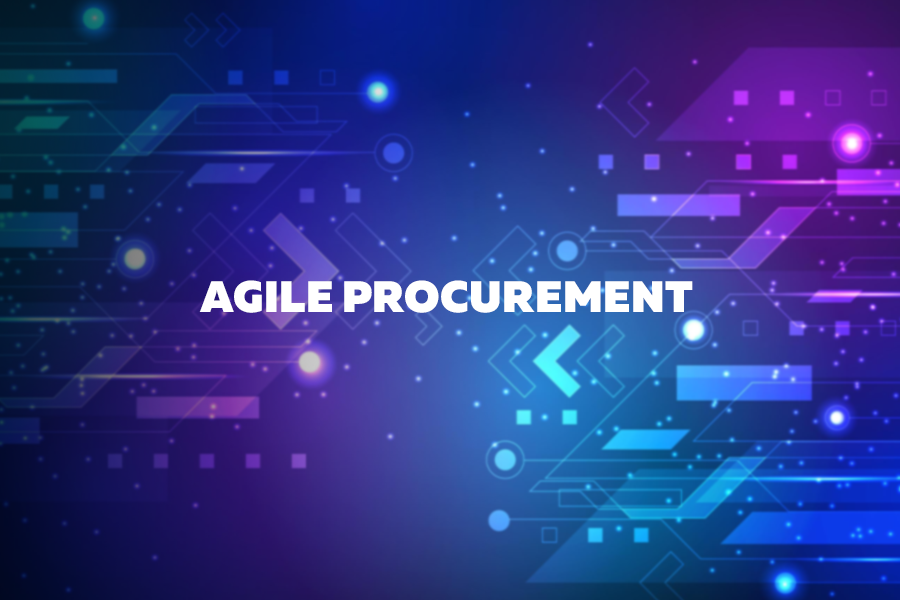
In the business environment, where speed and adaptability are competitive differentiators, optimizing processes and increasing productivity are increasingly important strategies.
The adoption of agile procurement allows companies to quickly respond to market demands and consumer expectations.
Agile procurement is based on the principles of agile methodologies, adapted to the procurement sector, prioritizing flexibility, collaboration, and continuous value delivery.
Traditionally, negotiations focused on the best prices and expense control. However, the current landscape requires more than just cost savings in the procurement area.
Agile procurement broadens the scope by also prioritizing innovation, collaboration with suppliers, and flexibility to adapt to business needs.
According to a McKinsey report, companies that adopt agile practices in procurement processes using management platforms like e-Procurement achieve 70% efficiency.
Below, discover the benefits of agile procurement for your procurement team and how to implement this strategy in your department’s daily operations:
Benefits of agile procurement for B2B procurement:
1. Adaptability and flexibility
Adaptability is one of the pillars of agile procurement, allowing procurement teams to quickly and efficiently adjust their strategies and operations.
An example is the diversification of suppliers, which helps minimize the impacts of shortages in more challenging scenarios.
2. Operational efficiency
Agile procurement improves process efficiency by enabling continuous and rapid adjustments in procurement operations, reducing response times and improving resource management.
For example, the automation of purchasing accelerates the approval of orders and the generation of reports, increasing team productivity.
3. Cost reduction and more savings
With the agile approach, it is possible to implement more strategic, data-driven purchasing practices, resulting in significant savings and better expense control.
For instance, comparing supplier offers through an automated comparison map is a way to secure better prices, deadlines, and payment terms.
4. Improved collaboration
Agile procurement promotes effective collaboration between requesters, procurement teams, and suppliers, better aligning needs and expectations.
The use of collaborative platforms, such as e-Procurement, facilitates real-time tracking of purchases, contributing to reduced lead times.
5. Visibility and control
The agile approach provides a clearer and more detailed view of procurement performance and metrics, allowing for more proactive management and informed decisions.
An example is tracking strategic procurement KPIs, such as savings, price evolution, and supplier compliance with ESG and compliance criteria.
How to implement agile procurement in your procurement area:
1. Adopt an agile mindset
Having an agile mindset means adapting quickly to changes, collaborating with the team, learning from mistakes, and adjusting strategies.
The focus is on continuously delivering value, prioritizing experimentation, feedback, and the continuous improvement of the procurement department.
2. Invest in technology
In today’s world, there is no agility without technology. By automating procurement processes using platforms like e-Procurement, manual tasks are eliminated.
In addition to reducing the time needed to complete a purchase, professionals are freed up to focus on strategies that truly add value to the business.
3. Foster a collaborative culture
A collaborative culture is essential for the success of agile procurement. Encourage open communication and the exchange of ideas between the procurement team and other departments.
To achieve agility, collaboration must be promoted not only within the team but also with suppliers and other stakeholders.
4. Request feedback from suppliers
Suppliers are important partners in providing insights on how to improve and streamline procurement processes.
By regularly requesting feedback, it is possible to identify opportunities for improvement and adjust strategies, resulting in more efficient collaboration and mutual benefits.
5. Seek continuous learning
The continuous development of skills and competencies is essential to keep up with changes in the industry and ensure the effective application of agile practices.
To prepare for the challenges ahead, stay up to date on purchasing and supply chain trends and innovations. Attend training, workshops, and industry events.
See you next time!


 Português do Brasil
Português do Brasil Español
Español Português
Português
